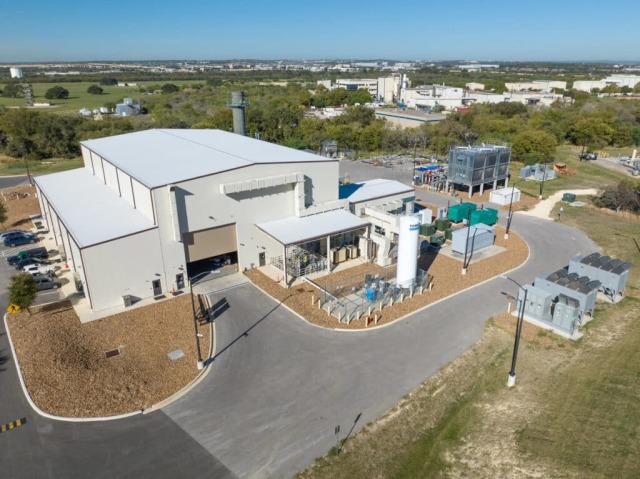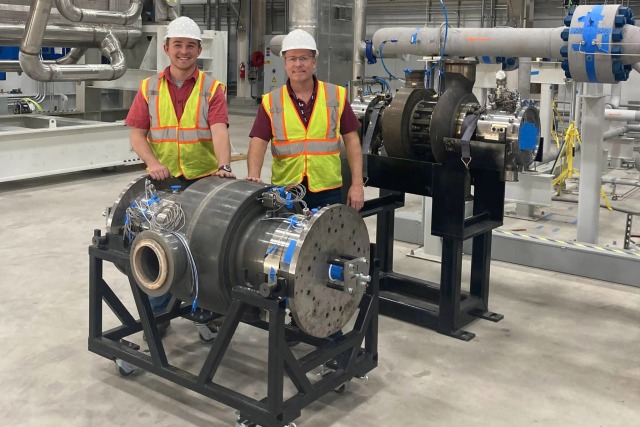The new turbine runs on carbon dioxide instead of traditional steam. Due to this, it receives more energy from the same amount of fuel, and is equal in size to an ordinary office desk.
Today, almost all coal-fired (36 percent of the world's electricity generation) and nuclear (10 percent of the world's generation) power plants use steam turbines . They also receive about 30 percent of electricity at combined cycle gas thermal power plants (20 percent of global generation). As a result, about half of all electricity on the planet is produced by steam installations, that is, devices where fuel first heats water vapor under pressure, and then it turns the turbine, simultaneously expanding and cooling. The rotation of the turbine rotor generates current.
This technology itself appeared in the XIX century. A large increase in pressure and temperatures allowed them to significantly increase their efficiency, but the fundamental limitations of the "age of steam" have not gone away.
The main disadvantage of such installations is that they are very bulky: the rotor has a mass of three to 150 tons, and the span of the blades can reach several meters. The total length of a large steam turbine reaches tens of meters: otherwise, the water vapor will not have time to give all its energy.
The need for such large installations dramatically increases the size of power plants and their cost. But even with such dimensions, the efficiency of steam turbines is difficult to raise above 45 percent. The reason is that it is technically very difficult to heat steam to the required 550-560 degrees (and above).
Engineers have been looking for ways to reduce the size of such turbines for a long time and at the same time maintain or even increase the initial capacity. Carbon dioxide ( CO2) turbines are considered as an alternative.
At a temperature of 31 degrees and a pressure of 74 bar, carbon dioxide goes into a supercritical state. In this state, the substance expands, occupying the entire volume provided, like a gas, but has a high density, like a liquid. Then, with the help of relatively small temperature changes, significant changes in the density of the substance can be caused.
The principle of operation of such a turbine is quite simple: solar energy heats salt, which is then used to heat carbon dioxide, initially stored in the form of dry ice. This superheated CO2 turns into a supercritical liquid — it is fed into the turbine, and electricity is produced at the outlet.
The efficiency of a turbine running on supercritical carbon dioxide is about 50 percent, that is, it can get 10 percent more electricity from the same amount of thermal energy than a conventional steam one. They are also quite compact. A meter-long CO2 turbine can do the same amount of work as a 20-meter-long steam turbine.
In addition, CO2 installations start, turn on and off much faster than steam ones. Prototypes of carbon dioxide turbines have shown that at an operating temperature of about 700 degrees, they take about two minutes to start generating energy, whereas steam turbines take at least half an hour.
Until recently, no such installations were presented. In 2016, General Electric announced that it was going to build the first turbine, but did not show the final working version. But this was done by specialists from the Southwest Research Institute (USA), GTI Energy and GE Vernova, as well as the US Department of Energy. At the end of October, in San Antonio, Texas, they presented a joint project: they opened the world's first carbon dioxide turbine, which was named Supercritical Transformational Electric Power (STEP).
 |
| The company in San Antonio, where the STEP turbine is located. |
| Source: Southwest Research Institute |
So far, this is a pilot version, but the developers have stated that it is "technically complete". STEP has the size of an office desk and is 10 times smaller than a conventional steam turbine of the same power.
STEP's capacity was 10 megawatts, it will provide electricity to about 10 thousand homes. Of course, 10 megawatts is just a pilot sample, and in the future they plan to build much larger devices on the same principle.
Considering that steam turbines today provide half of the world's electricity, their complete replacement with supercritical ones can potentially reduce the consumption of fossil and nuclear fuel in the steam turbine cycle by one tenth. In addition, it can make nuclear power plants using only steam turbines noticeably smaller and cheaper.
Engineers plan to put STEP into operation by 2024. Until then, it will be tested at a special factory. If the installation proves to be effective, it can be introduced into the work of various utilities, and begin to displace steam turbines at power plants with it.
In any case, representatives of the Southwest Research Institute are confident that their development will change the idea of electricity production in the near future.

